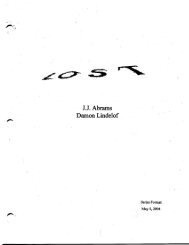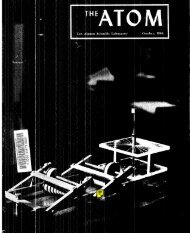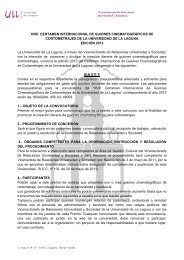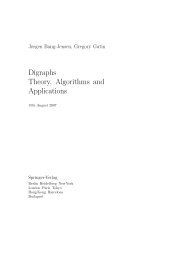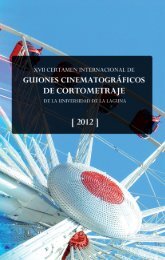Create successful ePaper yourself
Turn your PDF publications into a flip-book with our unique Google optimized e-Paper software.
AT THE<br />
BLACKBOARD II<br />
Ihe illnazinU Hl'aholoid<br />
Double reflection and redistribution of energy<br />
by M. l. Feingold<br />
HE "PHYSICAL" DEFINITION<br />
of the optical properties of aparabola<br />
can be based on the following<br />
property: a beam oi<br />
light that strikes a parabola parallel<br />
to its axis of symmetry Passes<br />
through its focus after reflection.<br />
From the principle of reversibility of<br />
light it follows that abeam coming<br />
from the focus of a parabola will<br />
travel parallel to its symmetry axis<br />
after reflection. In this article we'Il<br />
look at some purely "physical" features<br />
of light reflection from a paraboloid-that<br />
is, the surface formed<br />
by revolving a parabola about its axis<br />
of symmetry. The paraboloidal mirror<br />
is a paraboloid with a reflective<br />
interior surface. I{ light falls on such<br />
a mirror parallel to the axis of symmetry<br />
of the paraboloid, after reflection<br />
all the beams pass through its<br />
focus as if they were being collected<br />
there. On the other hand, rays ema-<br />
Figure 1<br />
nating from a point source at the<br />
focus wili propagate as a parallel<br />
beam after reflection on the mirror<br />
surface.<br />
I should point out that both of<br />
these effects are the result of only<br />
one reflection of the rays from the<br />
paraboloidal surface. If a paraboloid<br />
is rather deep, most of the entering<br />
rays willbe reflected twice (fig. 1).<br />
AIter the first reflection each beam,<br />
having passed through the focus,<br />
will again be re{lected from the opposite<br />
side of the paraboloid. In<br />
other words, the focus becomes a<br />
kind of point source of light.l But<br />
the rays of such a source leave the<br />
paraboloid as a parallelbeam. Thus,<br />
we come to the conclusion that the<br />
paraboloid converts the incoming<br />
beam, which is parallel to its symmetry<br />
axis, into an outgoing beam<br />
that is also parallel to this axis.<br />
The incident and reflected beams<br />
do differ, however, with regard to<br />
their energies. To understand this,<br />
let's look at figure 2. It shows the results<br />
of a very simple experiment.<br />
Photographic film is placed pe{penficular<br />
to the mirror's qrmmetry axis,<br />
with the photosensitive layer facing<br />
the reflective surface. The mirror is<br />
illuminated by a Light beam parallel<br />
to the symmetry axis with homogelln<br />
reality the designation "point<br />
source" is appropriate only to a certain<br />
extent/ in the sense that the<br />
dimensions are small. Later we'II see<br />
how this source differs from the point<br />
source.<br />
neous energy distribution over the<br />
cross section-that is, an equal<br />
amount of energy passes Per unit<br />
time through a unit area placed at any<br />
location perpendicular to the beam.<br />
The incoming light would strike the<br />
film homogeneously. However, in<br />
our experiment the film is struck bY<br />
reflected light, which produces the<br />
result shown in figure 2.<br />
',",i<br />
Figure2<br />
(a) Intensity distribution over the<br />
cross section of the outgoing beam;<br />
(b) plot of the intensity as a function<br />
of distance from the beam's axis.<br />
o<br />
E<br />
Y<br />
.=<br />
E<br />
o<br />
-o<br />
40<br />
JUtY/[lJ0UST lSg4



